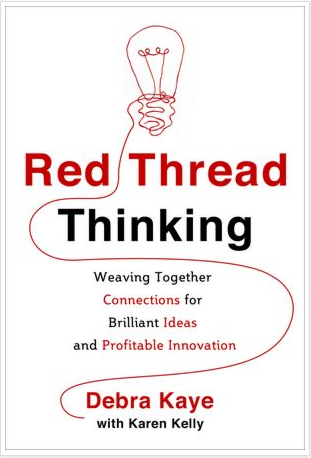What does it take to be a rapid-fire idea generator and solve problems in unique ways? A lot less then you think. It’s really about being open and having a positive attitude.
Thought is about making new combinations from existing elements. So being a great observer and looking at life with a positive, curious mind are really what it takes to enable great ideas to pop into your head. Openness and positivity mean that the next time a burr sticks to your sweater, instead of saying, “Uh-oh, a burr,” and discarding it, you might say, “Oh, a burr…look how it sticks….that’s useful,” and then go on to invent Velcro. In the first and more common instance, the reaction focuses on the object’s typical function and its annoying or negative implications (the sweater has a pull in it). The second reaction focuses on the possibilities of the function beyond the sweater.
Intuition comes from a correlative ability to understand how memories, observations, facts and feelings can best be brought to bear on the problem at hand. This ability to connect seemingly disparate events into cohesive, original thoughts doesn’t come from talent, just practice. The most original and surprising ideas come from making hidden and distant connections.
Being intuitive is not reserved for a few special people, but some people are more practiced at allowing their minds to clear and recapture the images and ideas that flow through them. The fact is that we’re all intuitive beings; we just need to give ourselves a chance.
There are remarkably simple and fun ways to open yourself up to generating new ideas. More than two decades ago, psychologist Mihaly Csikszentmihalyi proposed the concept of “flow” to describe the energized focus that characterizes the mind at its most productive. “Flow” is not like “laserlike focusing” or the miraculous illumination of a sudden brainstorm. It is more the feeling of what I call “bubbling up” or being carried in a direction because something is brewing, percolating in surprising ways, with an effervescence of bubbles and whirls of water moving forward, up and out.
Ideas Happen Here
There are many ways to jump-start your thinking when you’re working on solving a problem or looking for a new idea or business venture. Nothing works all the time, but there are two kinds of activities that help the most.
One is freeing your mind completely by engaging in a “mindless” activity that allows your brain to relax and expand. Hot baths, long walks, even doing household chores can work. The second is actually exercising your brain so that it becomes stronger and better at innovating.
The type of brain workout is important. You may be surprised to learn that crossword puzzles and memory games may not challenge your neurons if they aren’t difficult enough. Repeating already-learned skills makes you better at those skills, but it apparently doesn’t improve cognition.
New and challenging tasks stimulate the brain most and help to grow cognition. Researchers at the University of Hamburg subjected 20 young adults to one month of intense training in juggling. They found an increase in the corresponding gray matter in the brain as early as seven days after the training began. The added gray matter receded when the training was stopped, though the participants were still able to juggle. There are others—learning a musical instrument, learning a new language, studying for a difficult exam or understanding and memorizing the Latin name of plants – that could be the gateway to your next brilliant epiphany. Remember, it was a calligraphy class taken in college for enrichment that eventually led Steve Jobs to install a series of attractive fonts in his Mac computer. Had he never taken the class, he probably would not have understood the beauty and functionality of different styles of type, and that memory would not have existed years later when he was developing the Mac.


